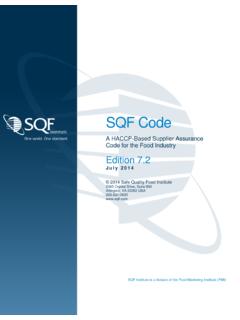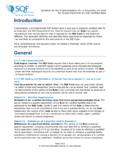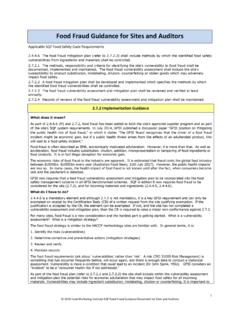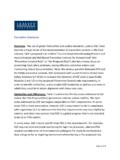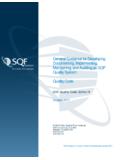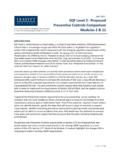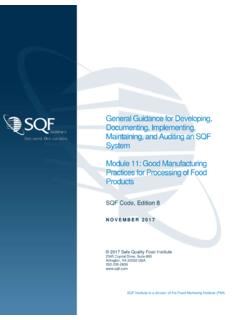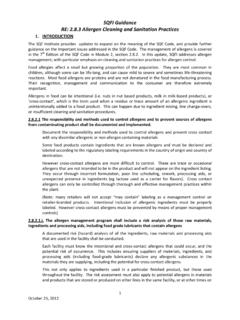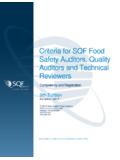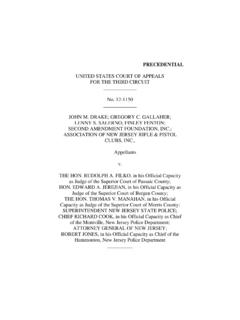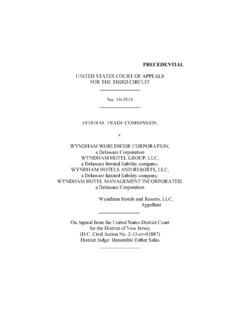Transcription of MEMORANDUM - SQF I
1 - 1 - 2015 hogan lovells US LLP. All Rights Reserved. Contact hogan lovells for permission to re-reprint, distribute, or otherwise use this lovells US LLPC olumbia Square555 Thirteenth Street, NWWashington, DC 20004T +1 202 637 5600F +1 202 637 :Joseph A. LevittElizabeth Barr FawellMaile Gradison HermidaVeronica ColasDate:September 18, 2015Re:FDAI ssues FinalPreventive ControlsRulesUnder FSMAThey re here! On Thursday, September 10, the Food and Drug Administration ( FDA ) released twofinal rules to implement the FDA Food Safety Modernization Act ( FSMA ): Current GoodManufacturing Practice, Hazard Analysis and Risk Based Preventive Controls for Human Food ( Preventive Controls ) and Current Good Manufacturing Practice, Hazard Analysis and Risk BasedPreventive Controls for Animal Food.
2 1/ The publication of these final rules is a major milestone inthe implementation of FSMA a landmark piece of legislation. They form the cornerstone of the lawand will shape daily food manufacturing operations and FDA inspections for decades to come. Asdiscussed further below, most companies will need to comply with these new requirements in oneyear, on September 19, MEMORANDUM provides key takeaways and highlights of the major provisions from thePreventive Controls final rule, focusing on those elements that changed between the proposed ruleor supplemental proposed rule and the final rule. 2/ Overall, the revisions to the regulations and thediscussion in the accompanying preamble clearly reflect the considerable input from industry and thewritten comments that were submitted during the rulemaking stage.
3 This outcome shows thesignificant importance and benefit of being engaged in the rulemaking s Preventive Controls final rule revises the agency s food safety regulations in two ways: (1) itadds new preventive controls provisions as required by FSMA; and (2) it updates and revises certainrequirements in the existing current good manufacturing practice ( cGMP ) regulations (current 21 CFR Part 110). Both the new preventive controls provisions and the cGMP revisions will be codifiedin a new section of Title 21 of the Code of Federal Regulations, Part 117. The final rule also revises1/The documents were published in the Federal Register on September 17. 80 Fed. (Sept. 17, 2015) (human food); 80 Fed.
4 Reg. 56170 (Sept. 17, 2015) (animal food).2/Because most human food companies do not intentionally produce animal food, though theymay divert by-products or food processing waste, this MEMORANDUM focuses on the human foodrule. For the most part, the proposed rule regarding animal food is the same as the rule for 2 - 2015 hogan lovells US LLP. All Rights Reserved. Contact hogan lovells for permission to re-reprint, distribute, or otherwise use this definitions in the agency s regulations on facility registration requirements, as registrationdetermines which facilities are subject to the preventive controls respect to the preventive controls provisions, the structure of the regulations largely tracks thestatute, establishing requirements for: a written food safety plan; hazard analysis; preventive controls;monitoring; corrective actions; verification (including validation and reanalysis); and associatedrecords.
5 There are also a number of exemptions and several modified requirements for certaintypes of facilities. Overall, the final rules are substantially the same as the supplemental proposalsfrom September 2014, 3/ and where revisions have been made, for the most part they provideadditional flexibility to facilities to manage their food safety plans. There are, however, also a fewareas where the final regulations are expected to present implementation challenges, and these arehighlighted MEMORANDUM highlights the major changes to the proposed and supplemental proposed rules,and presumes general knowledge of of Key Revisions1. Hazard AnalysisFDA has removed the term significant hazard from the regulations and has replaced it with hazardrequiring a preventive control.
6 The agency made this change, in response to industry comments, toavoid using a term that has been associated with hazard analysis and critical control point ( HACCP )systems and the establishment of critical control points ( CCPs ). Under the final rule, preventivecontrols may be established at points other than CCPs, and some controls previously considered prerequisite programs would be considered preventive controls. FDA would define hazardrequiring a preventive control as:A known or reasonably foreseeable hazard for which a person knowledgeable aboutthe safe manufacturing, processing, packing, or holding of food would, based on theoutcome of a hazard analysis (which includes an assessment of the severity ofillness or injury if the hazard were to occur and the probability that the hazard willoccur in the absence of preventive controls), establish one or more preventivecontrols to significantly minimize or prevent the hazard in a food and components tomanage those controls (such as monitoring, corrections or corrective actions,verification, and records)
7 As appropriate to the food, the facility, and the nature of thepreventive control and its role in the facility s food safety addition, although most industry comments regarding economically motivated adulteration ( EMA )recommended no regulatory requirements to address EMA at this time, the final rule requiresfacilities to consider EMA as part of their hazard analysis ( hazards that may be intentionallyintroduced for purposes of economic gain ).2. Management of ControlsThe final rules provide additional flexibility for the management of preventive controls to take intoaccount both the nature of the preventive control and its role in the facility s food safety , preventive controls management components must be applied as appropriate to3/See hogan lovells MEMORANDUM dated September 26, 2014,FDA Issues SupplementalPreventive Controls Proposed Rules Under 3 - 2015 hogan lovells US LLP.
8 All Rights Reserved. Contact hogan lovells for permission to re-reprint, distribute, or otherwise use this the effectiveness of the preventive controls, taking into account the nature of the preventivecontrol and its role in the facility s food safety system. This is the sliding scale approach that wasadvocated in many industry The regulations expressly allow for exception records for monitoring activities (recordsdemonstrating loss of control, rather than affirmative records demonstrating control).Corrective Actions. The final rule continues to require corrective action procedures to addresspositive product testing and environmental testing results. In the preamble, FDA agrees that thenature and extent of any response to testing findings should be proportional to the findings.
9 FDA isnot requiring facilities to take corrective action in response to each individual test finding, but ratherrequires the facility to establish written procedures that outline what actions should be taken andwhen. FDA also revised the rule to clearly state that corrective action procedures should be tailorednot only to the nature of the preventive control, but also to the nature of the addition to taking corrective actions, when unanticipated food safety problems occur, facilitiesalso are required to reanalyze their food safety plans. In the final rule, FDA clarifies that reanalysisis conducted when appropriate. The rule no longer requires reanalysis if a preventive control is notproperly implemented and a specific corrective action procedure has not been established, andinstead only requires reanalysis if a corrective action procedure has not been established.
10 Thus,facilities are not required to have corrective action procedures specific to each preventive FDA defines correction to mean an action to identify and correct a problem withoutother actions associated with corrective action procedures. Corrections can be taken for sanitationand food allergen controls, as well as for minor and isolated problems that do not directly impactproduct safety. Validation. The final rule continues to exempt food allergen controls, sanitation controls, the supply-chain program, and the recall plan from validation. In addition, other controls do not need to bevalidated if the preventive controls qualified individual prepares a written justification that validation isnot applicable.
